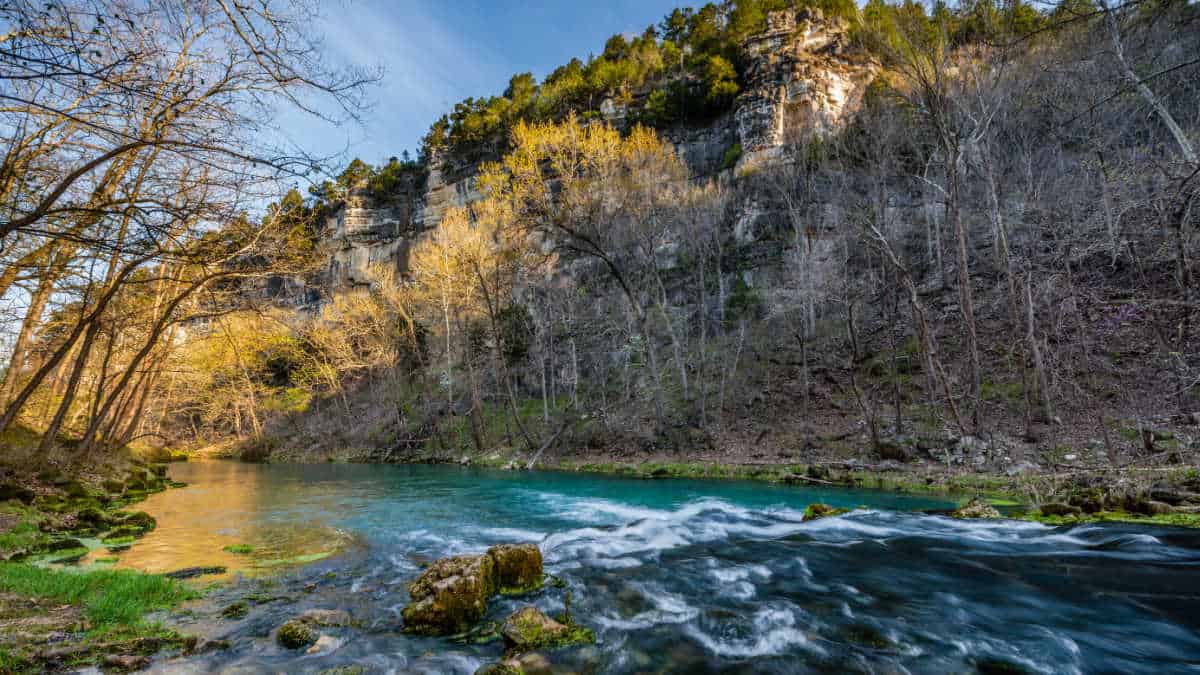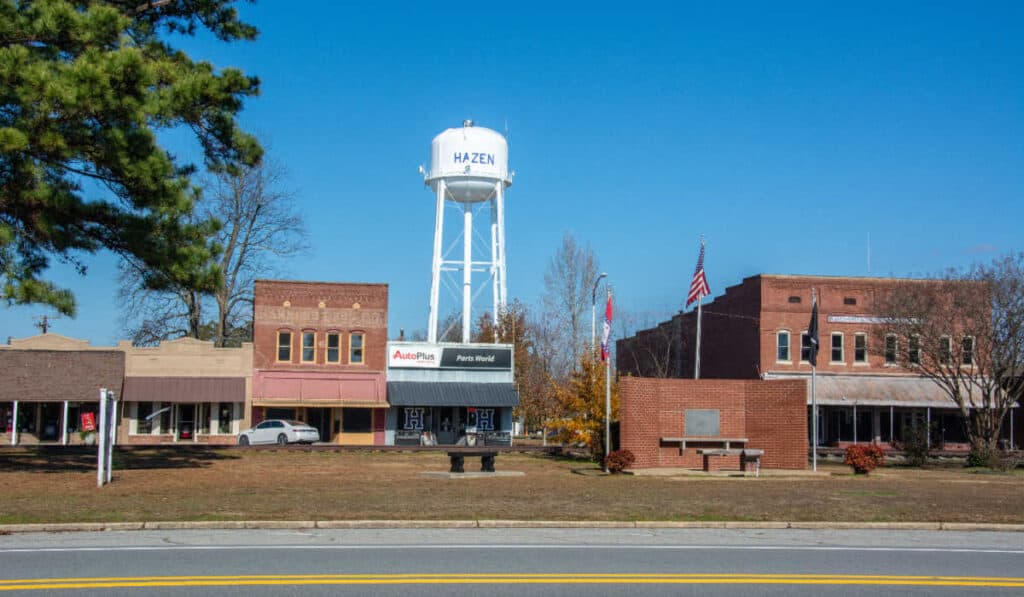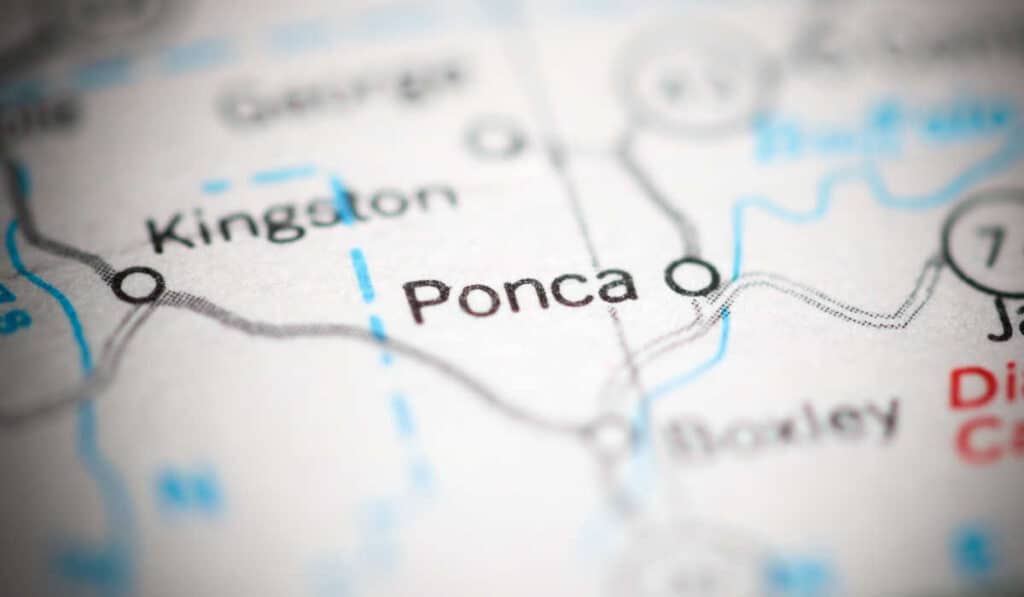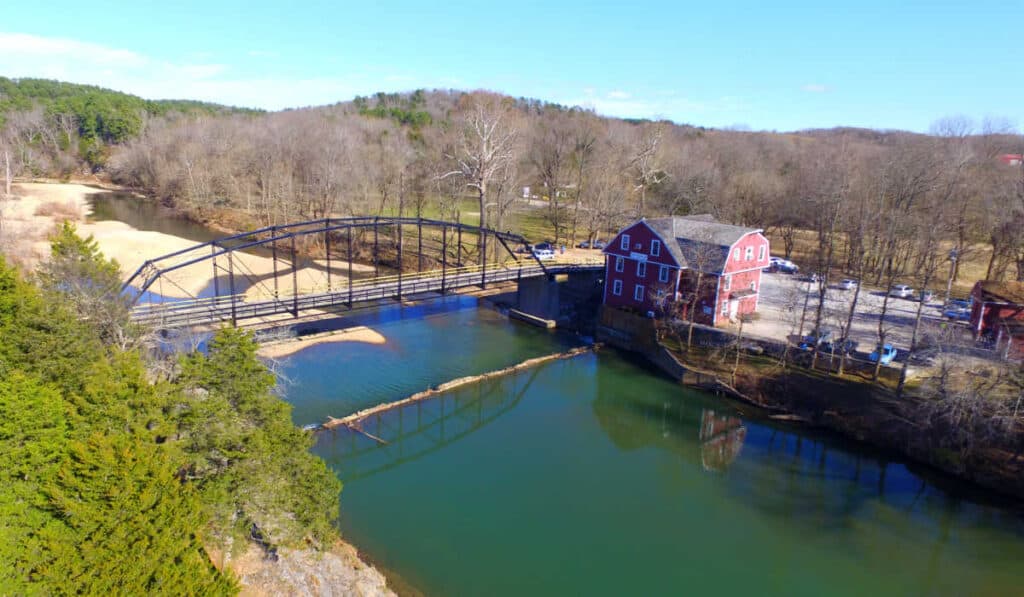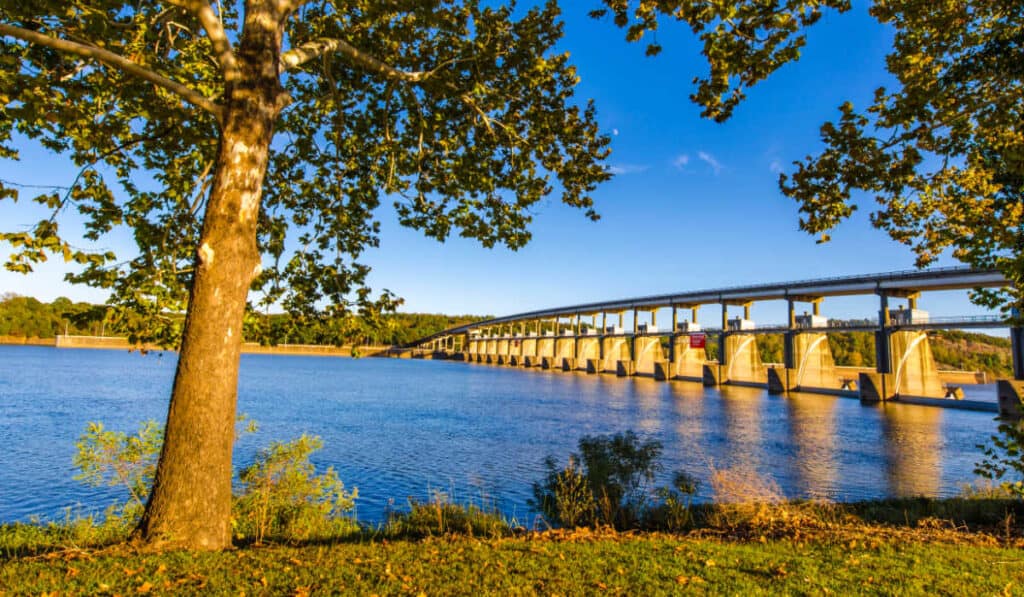Nestled in the heart of Missouri, Ha Ha Tonka State Park offers a unique blend of fascinating history and breathtaking natural beauty. Spanning over 3,700 acres, this remarkable park is an oasis for those looking to escape the daily hustle and embrace the tranquility of the great outdoors. With its well-preserved woodlands, distinctive karst features, and historic castle ruins, Ha Ha Tonka provides an unforgettable experience for visitors of all ages.
Families and adventurers alike will find plenty to do and see within the park’s diverse landscape. From exploring the castle ruins perched atop a bluff to marveling at the crystal blue springs at lake level, there’s no shortage of excitement. With an extensive network of trails, Ha Ha Tonka State Park caters to all hikers’ skill levels, offering a rich, immersive experience in the enchanting beauty of the Ozarks.
Whether you’re a first-time visitor or a seasoned explorer, Ha Ha Tonka State Park is a must-visit destination in Missouri. Discover the rich history, captivating natural wonders, and serene atmosphere as you journey through the park, creating lasting memories with friends and family. Don’t miss the chance to experience the magic of Ha Ha Tonka for yourself.
Ha Ha Tonka State Park Overview
History
Ha Ha Tonka State Park is a unique park located in Missouri, known for its fascinating history and geological features. The park’s most notable feature is the ruins of Ha Ha Tonka, an early 20th-century stone mansion that was modeled after European castles of the 16th century. The mansion tragically burned down in a fire but the ruins still stand and are a popular attraction for park visitors.
Location
The Ha Ha Tonka State Park spans over 3,700 acres and is situated on the Niangua arm of the Lake of the Ozarks, about five miles south of Camdenton, Missouri. Its proximity to Kansas City makes it a great day-trip destination for residents and visitors alike. The park’s entrance is easily accessible, and the natural beauty surrounding it is well worth the visit.
Missouri State Parks
As part of the Missouri State Parks system, Ha Ha Tonka offers visitors a range of recreational activities in addition to the historical and geological attractions. The park’s landscape consists of sinkholes, caves, a huge natural bridge, soaring bluffs, and Missouri’s twelfth largest spring. With 15 miles of trails traversing the park, visitors are provided with a variety of hiking experiences, including accessible paved walkways and rugged, rocky trails.
In summary, Ha Ha Tonka State Park has a rich history and a stunning landscape that visitors can enjoy through a wide variety of recreational activities. The park’s location in Missouri, near Kansas City and Camdenton, makes it a perfect destination for both locals and tourists.
Natural Wonders and Geology
Springs
Ha Ha Tonka State Park, located in the Ozarks, is home to one of Missouri’s most impressive springs, known as Ha Ha Tonka Spring. This spring originates from the karst geology of the area and contributes to the park’s diverse aquatic ecosystem. The spring pumps out an average of 48 million gallons of water per day, and its crystal-clear waters provide a beautiful and serene atmosphere for visitors.
Caves and Sinkholes
The park is also known for its numerous caves and sinkholes, which are a result of the dissolution of limestone bedrock in the area. These geologic features not only form unique landscapes but also serve as habitats for various cave-dwelling species. While visiting Ha Ha Tonka State Park, you can explore some of these caves and learn about the processes that formed them.
Natural Bridge
One of the most striking features in Ha Ha Tonka State Park is the Natural Bridge. This 60-foot-long limestone arch was created through chemical and physical weathering over a long period. As a testimony to the park’s rich geologic history, the Natural Bridge is an awe-inspiring structure that provides a fantastic photo opportunity for visitors.
Rocky Glades
Open rocky glades are yet another fascinating landscape found in this park. They are characterized by thin, rocky soils that support unique plant and animal communities. These glades are home to diverse species, including various wildflowers, reptiles, and birds. Exploring these fascinating ecosystems is both educational and enjoyable for park visitors.
Sheer Bluffs
Finally, Ha Ha Tonka State Park boasts some of the most breathtaking sheer bluffs in the Ozarks. These towering limestone cliffs were formed by an ancient sea, and they dominate the landscape around the park’s many trails. Hiking through the park provides visitors with stunning views of these geologic wonders and opportunities to observe the area’s plant and animal life.
Trails and Hiking
Ha Ha Tonka State Park offers a variety of trails for all skill levels, providing opportunities to explore the park’s diverse landscapes, including caves, cliffs, and the famous castle ruins. This guide will introduce the trails, difficulty levels, and some handy hiking tips.
Trail Descriptions
- Spring Trail: This trail provides access to Ha Ha Tonka Spring and the remains of the historic water tower. A small overlook on the trail offers scenic views of the spring (source).
- Castle Trail: This popular trail leads you to the impressive castle ruins, offering stunning views of the surrounding area (source).
- Island Trail: This trail is temporarily closed due to ongoing projects, but normally loops around an island formation, allowing visitors to observe unique geological features (source).
- Colosseum Trail: This trail boasts dramatic views of the natural amphitheater-shaped sinkhole and diverse plant life.
- Turkey Pen Hollow Trail: A longer, multi-use trail where hikers can explore the oak woodlands and varied terrains of the park.
- Dell Rim Trail: This trail offers magnificent views of the Ha Ha Tonka valley from atop the bluffs.
- Quarry Trail: History enthusiasts will enjoy this trail as it passes by remnants of an old stone quarry.
- Boulder Ridge Trail: This trail is perfect for adventurers seeking large glades and stunning rock formations.
- Oak Woodland Trail: Perfect for a leisurely hike, this trail immerses visitors in a picturesque oak forest.
Difficulty Levels
- Easy: Oak Woodland Trail, Spring Trail, Castle Trail
- Moderate: Dell Rim Trail, Quarry Trail, Boulder Ridge Trail, Colosseum Trail
- Difficult: Turkey Pen Hollow Trail, Island Trail (when open)
Hiking Tips
- Plan your hike based on your fitness level and time constraints. Shorter, easy trails like Castle and Oak Woodland Trails are great for families and visitors short on time.
- Bring water, sunscreen, insect repellent, and appropriate clothing. Missouri weather can be unpredictable, so dress in layers and be ready for rain.
- Stay on marked trails to protect the park’s fragile ecosystems and avoid getting lost.
- Observe park rules such as not littering and keeping dogs on a leash.
- Review trail conditions and closures before your visit by checking Missouri State Parks’ website or calling the visitor center at 573-346-2986.
Visitor Amenities and Facilities
Visitor Center
Ha Ha Tonka State Park features a visitor center where guests can find informative displays about the history and natural landscape of the park. The visitor center also offers maps and brochures to navigate the park and explore nearby attractions.
Restrooms and Picnic Areas
The park provides restrooms facilities for visitor convenience. In addition, there are small picnic areas scattered throughout the park, with 20 available for public use. These picnic areas are open every day and offer a place for visitors to relax and enjoy a meal during their exploration. For larger gatherings, there are also Lake Shelter and Post Office Shelter that can be reserved.
Parking and Accessibility
Parking at Ha Ha Tonka State Park is available near the main entrance, making it easy for visitors to access the park’s attractions. The park offers accessibility features to accommodate guests with disabilities by providing accessible boardwalks and trails. However, it is important to note that some attractions, such as the castle ruins, are located atop a bluff and require climbing 316 stairs. Therefore, these areas might not be suitable for all visitors.
Activities and Attractions
Ha Ha Tonka State Park, a 3,700-acre paradise in Camden County, Missouri, offers a variety of activities and attractions for visitors. Some of the key features include castle ruins, picnicking areas, fishing spots, and water activities.
Castle Ruins and Other Structures
One of the park’s main attractions is the turn-of-the-century stone castle that stands atop a cliff overlooking the surrounding landscape. The castle ruins are accessible via the Castle Trail, which offers breathtaking views of the area.
In addition to the castle, you can also explore the park’s historic water tower and carriage house. These structures contribute to the park’s rich history and allow visitors to step back in time.
Picnicking and Family Gatherings
The park offers plenty of opportunities for picnicking and family gatherings, making it a great spot for large groups and families. There are numerous picnic areas throughout the park, each with its unique scenery and amenities. Some of these areas can be reserved for private events, providing an excellent choice for family reunions and other celebrations.
Fishing and Water Activities
The Lake of the Ozarks area offers a variety of water-based activities and adventures. Fishing enthusiasts can try their luck in its numerous coves and inlets, rich in different fish species.
Besides fishing, visitors can also enjoy swimming, kayaking, and canoeing in the vast lake. Whether you’re interested in a relaxing day on the water or an adrenaline-pumping adventure, there are plenty of options available for everyone.
Planning Your Visit
Weather and Best Time to Visit
Ha Ha Tonka State Park, located near Lake of the Ozarks in Camden County, MO, offers a stunning 3,700-acre expanse of lush woodland and hiking trails, making it a popular destination for outdoor enthusiasts. The park experiences a wide range of weather conditions throughout the year. The best time to visit the park is typically from April through October, when the weather is more favorable for outdoor activities, such as hiking and exploring the park’s natural wonders. Spring and fall offer mild temperatures and colorful foliage, while summer provides warm weather, perfect for swimming and water-based recreation.
Entrance Fees
There is no entrance fee required to visit Ha Ha Tonka State Park, making it an affordable option for a day trip or weekend getaway. Visitors can enjoy free access to all park amenities, including hiking trails, picnic areas, and the historic castle ruins.
Park Website and Contact
The official Ha Ha Tonka State Park website is a great resource for information on park hours, events, trail maps, and more. For any additional questions or concerns, you can contact the park’s visitor center at 573-346-2986.
Additional Information and Tips
Local Attractions and Events
Ha Ha Tonka State Park offers a variety of natural attractions, including caves, bluffs, and spectacular views. Visitors can explore the unique geologic features, such as Whispering Dell Sinkhole and Devil’s Kitchen Trail, while getting lost in the beauty of the park. The park also hosts events and activities throughout the year, so be sure to check their website for the latest happenings.
Accessibility and Inclusivity
The park aims to be accessible to everyone, with a variety of trails catering to different levels of hiking experience. Some of the paths may be challenging for those with mobility issues; however, there are other options in the park for all to enjoy. Visitors can use the park map to identify the most suitable trails for their needs and abilities.
Safety and Regulations
While visiting Ha Ha Tonka State Park, it’s important to abide by the park’s safety regulations and guidelines, including:
- Staying on designated trails
- Not climbing on rock formations or bluffs
- Adhering to posted signs about areas that are off-limits
- Following rules for camping (if applicable)
- Keeping the park clean by disposing of trash properly
By adhering to these guidelines, visitors can help maintain the beauty and integrity of the park, ensuring that it remains a safe and welcoming environment for all who visit!

